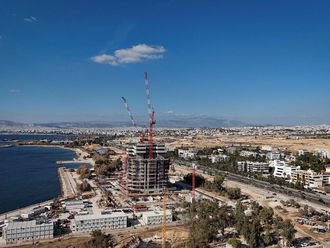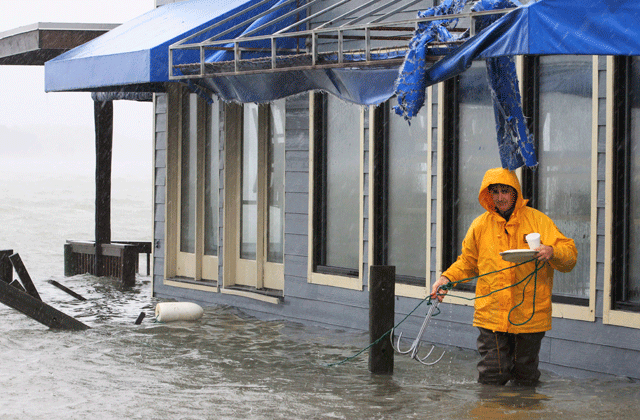
The massive storm stretched over hundreds of miles and paralyzed several major cities as it brought coastal flooding and hurricane-force winds to the densely-populated East Coast and blizzards to the mountainous interior.
Seawater coursed between the iconic skyscrapers of New York's financial district in lower Manhattan, flooding subways and road tunnels and shorting out the power grid, plunging more than six million households into darkness.
Further south, the sea surged over vast swathes of the eastern seaboard, turning coastal cities into ghost towns as the high winds grounded airplanes and shut down rail links, public transport and government offices.
The catastrophe completely overshadowed the US election race, forcing a halt to campaigning a week before Americans are due to go to the polls to choose between President Barack Obama and challenger Mitt Romney.
Hurricane Sandy had killed 67 people as it tore through the Caribbean, and reports of more deaths began to arrive after it made landfall at 8:00 pm (0000 GMT) in New Jersey and began to wreak havoc in the United States.
Local officials in New York, New Jersey, Pennsylvania, Maryland, West Virginia and North Carolina reported 13 dead in storm related incidents, and Toronto police said a Canadian woman was killed by flying debris.
Authorities warned the threat to life and property was "unprecedented" and ordered hundreds of thousands of residents in areas from New England to North Carolina to evacuate their homes and seek shelter.
The National Hurricane Center said wind speeds inside Sandy dropped as the storm became a post-tropical cyclone, but remained hurricane-force at 75 miles per hour (120 kmph) after it made landfall near casino resort Atlantic City.
Falling trees tore down power cables, plunging what weather experts said were millions of homes into darkness, while storm warnings cut rail links and marooned tens of thousands of travelers at airports across the region.
A nuclear power plant in New Jersey declared an alert as waters rose.
The Oyster Creek nuclear power plant, just north of Atlantic City, was already on a scheduled outage as Sandy made landfall, and the industry regulator said there was no immediate danger.
The hurricane sent a record storm surge of 13.7 feet (4.15 meters) into lower Manhattan, flooding seven major subway tunnels used by hundreds of thousands of daily commuters and swamping cars in the financial district.
"The New York City subway system is 108 years old, but it has never faced a disaster as devastating as what we experienced last night," city transport director Joseph Lhota said early Tuesday.
Hours earlier, a power sub-station exploded in a burst of light captured by amateur photographers as a massive blackout left much of Manhattan, and some 500,000 homes across New York City, in darkness.
The flood waters had begun to recede early Tuesday, but the Con Edison power company said it could take a week to completely restore power.
Disaster estimating firm Eqecat forecast that Sandy would affect more than 60 million Americans, a fifth of the population, and cause up to $20 billion (15 billion euros) in damage. Refineries closed and major arteries such New York's Holland Tunnel were shut to traffic. The operator of two major New Jersey nuclear plants said they might have to be closed, threatening half the state's power supply.
The New York Stock Exchange, the Nasdaq and the futures markets in Chicago were closed for Monday and Tuesday, along with federal government offices and the entire Amtrak rail network on the eastern seaboard.
Obama urged Americans to heed local evacuation orders as he stepped off the campaign trail and spent the day in the White House helping to coordinate the response to the disaster.
"The election will take care of itself next week," Obama said. "Right now, our number one priority is to make sure that we are saving lives... and that we respond as quickly as possible to get the economy back on track."
Both the Democratic incumbent and his Republican rival Romney were keen to display resolute leadership in the face of the storm, given the memory of Hurricane Katrina in 2005. Romney also canceled some appearances.
Former president George W. Bush was widely seen as having bungled the handling of Katrina, which devastated New Orleans. The failure of authorities in the ensuing emergency response tainted the rest of his presidency.
Obama has signed emergency declarations to free up federal disaster funds for New York state, Massachusetts, Connecticut, Maryland, the District of Columbia, New Jersey, Pennsylvania, Rhode Island, Virginia and West Virginia.
Deadly storm floods and blacks out Manhattan
New York: Hurricane Sandy sent crippling floods pouring onto New York streets, provoking a power plant explosion, blacking out much of Manhattan and leaving widespread storm devastation.
The so-called "Franken-storm" left at least one person dead in America's biggest city, while emergency services staged many rescues of people trapped in their homes and in a hospital which lost power.
Seawater burst the banks of the East and Hudson rivers, submerging road and subway tunnels. Power was cut to about 500,000 homes across New York City's five boroughs, including 250,000 in Manhattan. Gale force winds pushed over a crane on a skyscraper and tore off the facade of another building.
A falling tree killed a man in the Queens borough, firefighters said. But many people had to be rescued from the upper floors of their homes after ignoring pleas to flee zones at risk from floods, officials said. "I am seriously concerned for people's lives," said Vincent Ignizio, a Staten Island councilor. Police appealed for boats to conduct rescue missions in Staten Island and at Coney Island in Brooklyn. Four other dead were reported in New York state outside the main city.
The hurricane whipped up a record storm surge of 13.7 feet and seawater inundated the key Queens Midtown and the Battery Park-Brooklyn tunnels which take traffic from Manhattan Island to nearby suburbs. The water threatened to engulf the building site at the World Trade Center where the September 11, 2001 attacks were staged.
Many cars in the financial district were swamped, some in New York suburbs were swept away. Debris crushed some cars. The Con Edison power company said 500,000 homes in New York City were without power. Company vice president John Miksad told reporters it could take a week to completely restore power. He blamed floods or flying debris for an explosion at a sub-station on the east side of Manhattan's Midtown at the height of the storm. Film of the explosion has been widely viewed on YouTube.
Much of lower Manhattan was blacked out after the explosion. New York University hospital had to move patients to other hospitals after it lost power and a back-up generator. "We went up to 14 foot tides, which no-one was forecasting," Miksad said.
Howling winds of up to 150 kilometers an hour battered the city, pushing over a crane atop a 1,004 luxury apartment skyscraper overlooking Central Park. The boom of the crane swayed in the fierce gusts and police evacuated surrounding buildings and streets because of the risk that it could fall.
In another spectacular demonstration of its power, the hurricane pulled off the facade of a three-story building in the Chelsea district. No injuries were reported however. Tens of thousands of people ignored appeals by the New York mayor to leave districts at risk where police had toured the streets calling for inhabitants to take special buses to safety.
Authorities issued a mandatory evacuation order for 375,000 people at risk, but the majority decided to brave it out. New York state called up 2,100 National Guard troops on Sunday and Monday to patrol threatened districts. "If water is coming into your home, go to the highest area," New York mayor Michael Bloomberg told a press conference amid the worst of the carnage.
Bloomberg said the public was making 10,000 emergency 911 calls every 30 minutes and appealed to New Yorkers to not just to report power cuts. "It means that genuine emergencies are not being answered," he said. He also called for taxis to stay off the roads to give priority to emergency vehicles.
New York authorities closed the subway train system and nearly all tunnels and bridges that take traffic off Manhattan as the full force of Sandy hit America's biggest city. The subway was to remain closed on Tuesday, along with schools, public buildings.
Superstorm makes landfall
Atlantic City, New Jersey: Superstorm Sandy slammed into the New Jersey coastline and hurled a record-breaking 13-foot surge of seawater at New York City on Monday, roaring ashore after washing away part of the Atlantic City boardwalk and putting the presidential campaign on hold.
Just before its centre reached land, the storm was stripped of hurricane status, but the distinction was purely technical, based on its shape and internal temperature. It still packed hurricane-force wind, and forecasters were careful to say it remained every bit as dangerous to the 50 million people in its path.
The National Hurricane Center announced at 8pm that Sandy had come ashore near Atlantic City. The sea surged a record of nearly 13 feet at the foot of Manhattan. In an attempt to lessen damage from the storm, New York City's main utility cut power to about 6,500 customers in lower Manhattan. Authorities worried that seawater would seep into the New York subway and cripple it, along with the electrical and communications systems that are vital to the nation's financial centre.
As it closed in, Sandy knocked out electricity to more than 1.5 million people and figured to upend life for tens of millions more. It smacked the boarded-up big cities of the Northeast corridor, from Washington and Baltimore to Philadelphia, New York and Boston, with stinging rain and gusts of more than 135 kph.
As it made its way toward land, it converged with a cold-weather system that turned into a fearsome superstorm, a monstrous hybrid consisting not only of rain and high wind but of snow. Forecasters warned of 20-foot waves bashing into the Chicago lakefront and up to 3 feet of snow in West Virginia.
Hundreds of thousands of people were under orders to move to higher ground. The storm knocked out electricity to more than 1 million people, and storm damage was projected at $10 billion to $20 billion, meaning it could prove to be one of the costliest natural disasters in US history.
President Barack Obama and Mitt Romney suspended their campaigning with just over a week to go before Election Day.
At the White House, Obama made a direct appeal to those in harm's way: "Please listen to what your state and local officials are saying. When they tell you to evacuate, you need to evacuate. Don't delay, don't pause, don't question the instructions that are being given, because this is a powerful storm."
The storm washed away a section of the Atlantic City Boardwalk in New Jersey. Water was splashing over the seawalls at the southern tip of Manhattan.
New York City authorities worried that salt water would seep through the boarded-up street grates and through the sandbags placed at subway entrances, crippling the electrical connections needed to operate the subway.
Authorities also feared the surge of seawater could damage the underground electrical and communications lines in lower Manhattan that are vital to the nation's financial center.
A construction crane atop a luxury high-rise in midtown Manhattan collapsed in high winds and dangled precariously. Residents in surrounding buildings were ordered to move to lower floors and the streets below were cleared, but there were no immediate reports of injuries.
The facade of a four-story Manhattan building in the Chelsea neighborhood crumbled and collapsed suddenly, leaving the lights, couches, cabinets and desks inside visible from the street. No one was hurt, although some of the falling debris hit a car.
In the New York borough of Queens, police said a man was killed when a tree fell on his home - the first confirmed storm-related death in New York City. The major American stock exchanges closed for the day, the first unplanned shutdown since the Sept. 11 attacks in 2001. Wall Street expected to remain closed on Tuesday. The United Nations canceled all meetings at its New York headquarters.
Authorities warned that New York City and Long Island could get the worst of the storm surge: an 11-foot (3-meter) onslaught of seawater that could swamp lower Manhattan, flood the subways and damage the underground network of electrical and communications lines that are vital to the nation's financial capital.
"Leave immediately. Conditions are deteriorating very rapidly, and the window for you getting out safely is closing," New York Mayor Michael Bloomberg told those in low-lying areas earlier in the day.
Defiant New Yorkers jogged, pushed strollers and took snapshots of churning New York Harbor on Monday, trying to salvage normal routines. Without most stores and museums open, tourists were left to snap photos of the World Trade Center site, Wall Street and Times Square in largely deserted streets.
Belgian tourist Gerd Van don Mooter-Dedecker, 56, wandered in to Trinity Church after learning that a planned shopping spree with her husband Monday wouldn't happen. "We brought empty suitcases so we could fill them up," she said. As rain from the leading edges began to fall over the Northeast on Sunday, hundreds of thousands of people from Maryland to Connecticut were ordered to leave low-lying coastal areas, including 375,000 in lower Manhattan and other parts of New York City, 50,000 in Delaware and 30,000 in Atlantic City, New Jersey.
Obama declared emergencies in Massachusetts, Connecticut, Rhode Island, New York, New Jersey and Pennsylvania, authorizing federal relief work to begin well ahead of time. He promised the government would "respond big and respond fast" after the storm hits.
New Jersey Gov. Chris Christie was typically blunt: "Don't be stupid. Get out." Those who stayed in New York had few ways to get out. New York's subways, which serve 5 million people a day, were shut down. The Holland Tunnel connecting New York to New Jersey was closed, as was a tunnel between Brooklyn and Manhattan, and the city planned to shut down the Brooklyn Bridge, the George Washington, the Verrazano-Narrows and several other spans because of high winds.
Off North Carolina, a replica of the 18th-century sailing ship HMS Bounty that was built for the 1962 Marlon Brando movie "Mutiny on the Bounty" went down in the storm, and 14 crew members were rescued by helicopter from rubber lifeboats bobbing in 18-foot (5.5-meter) seas. Another crew member was found hours later but was unresponsive. The captain was still missing.


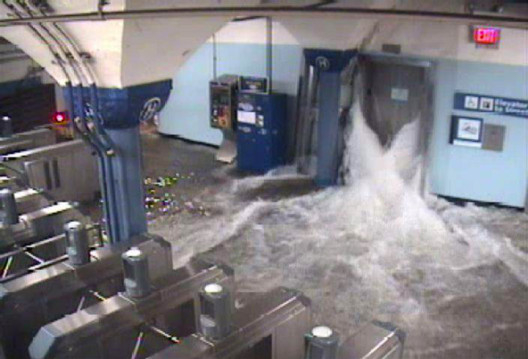
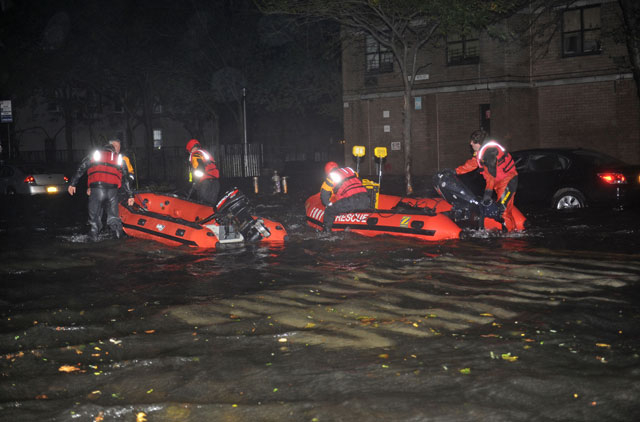
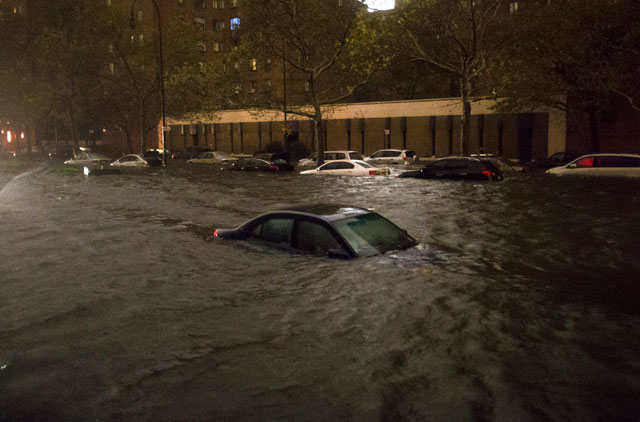
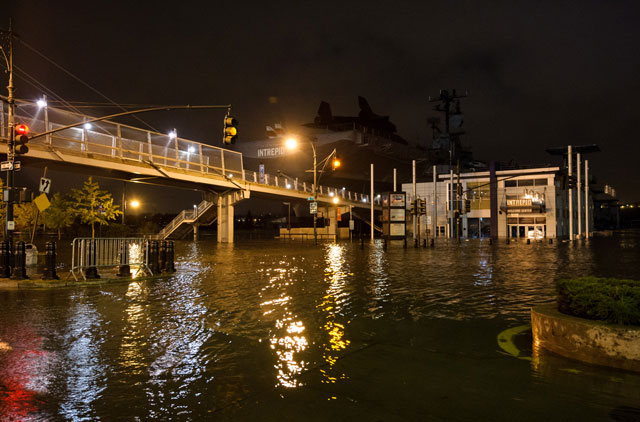

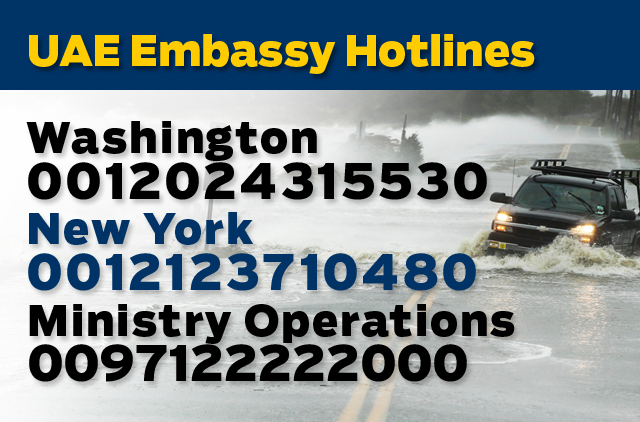

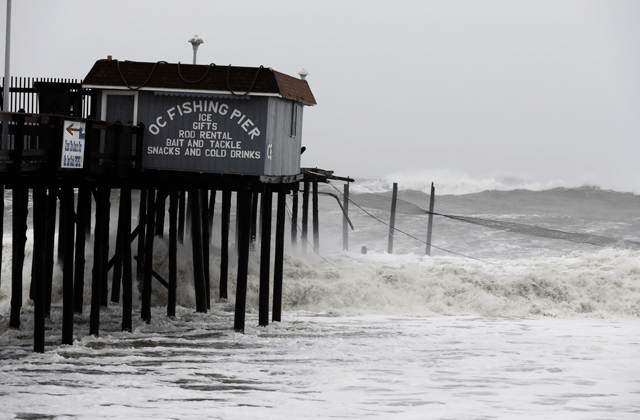
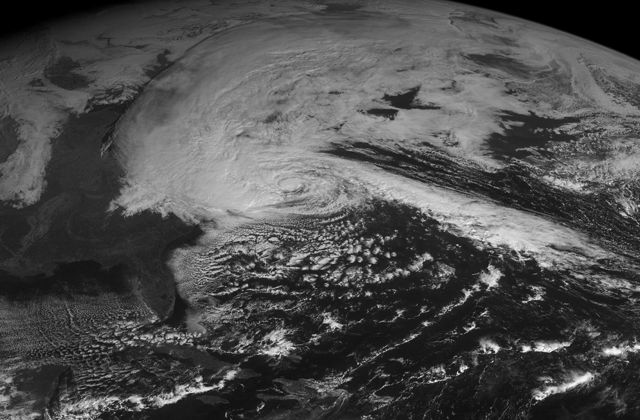
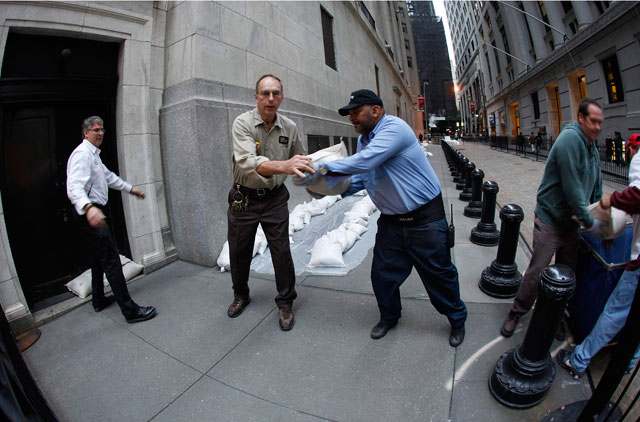
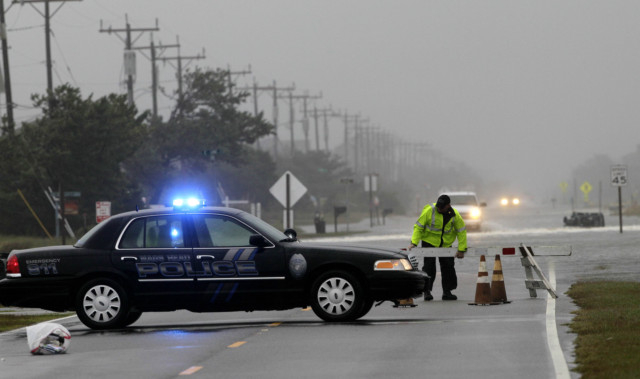
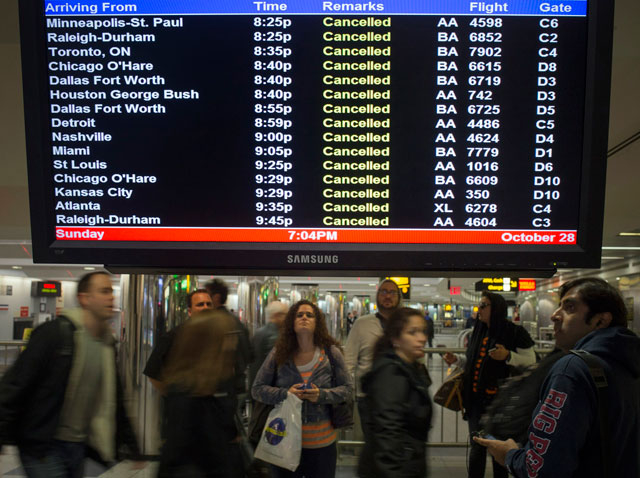
_resources1_16a30b3eac4_small.jpg)








